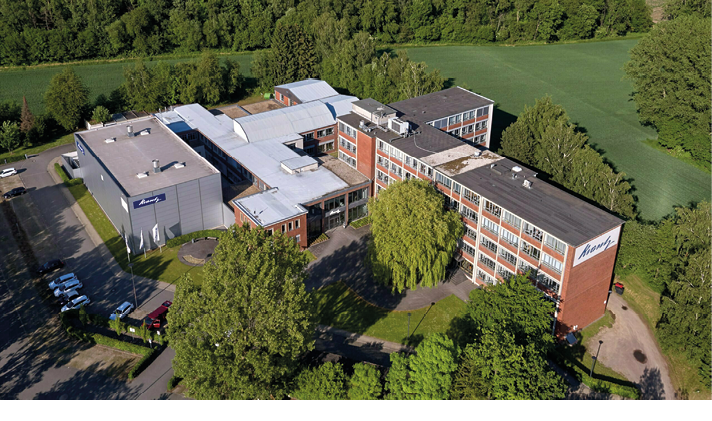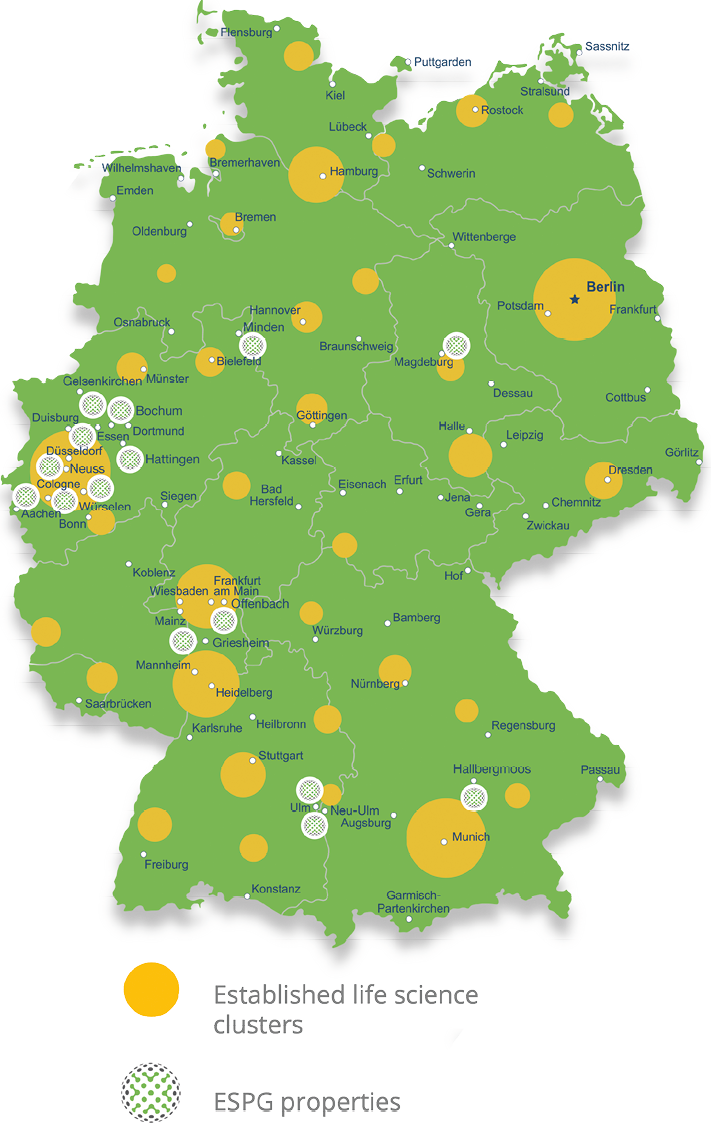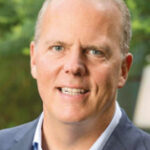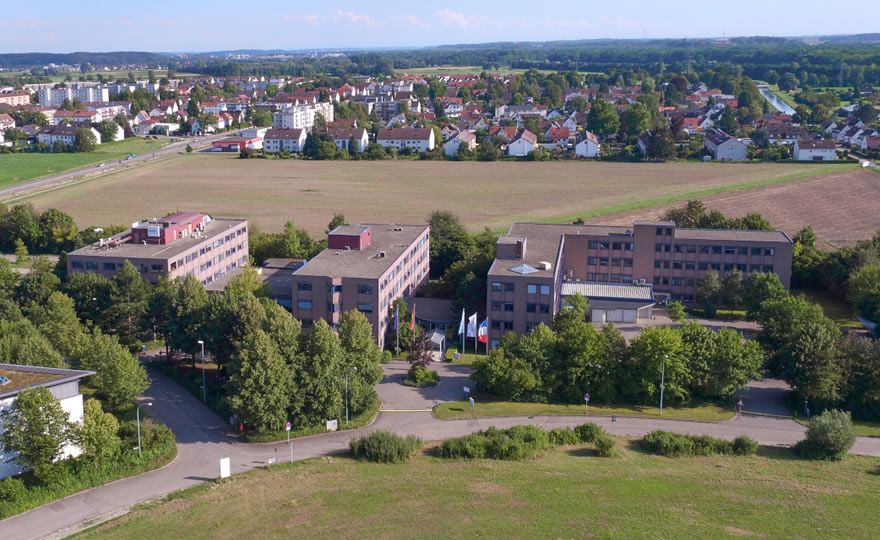Bildnachweis: ESPG.
The search for the ideal site presents life science and research companies with manifold challenges The needs can at times be very complex. With their suitable ecosystems, science parks offer very promising solutions.
Engineering Park Aachen
There is no generally accepted definition of what a “science park” is. However, certain criteria apply to all areas, each to the same extent: A science park is home to several research institutions and companies. As opposed to science clusters, which are often spread out in terms of area, science parks are dedicated and compact settlements of highly innovative companies. They are often in the vicinity of universities or research facilities in order to facilitate the search for specialists. Science parks should offer the hosted companies an adequate ecosystem. That requires operators to provide a matching highly specialised and broad service spectrum. This extends from individual area concepts and support with complex approval processes to the creation of attractive framework conditions for specialised staff and concrete solutions to finance growth.

Suitable area concept
Choosing the right science park is so difficult in particular because the site not only has to meet the current needs of research projects, but also be optimally geared to address the expected growth of companies. So how can you plan for tomorrow when choosing the ideal site today? The corresponding solutions range from reserving land for expansion to the early planning of extension buildings and alternative area usage concepts. Key here is the early dialogue between prospective tenants and science park owners in order to find the ideal solutions. How it looks in practice: At the “Blue Circle” science park near Aachen, a two-tier model was developed for an innovative tenant. In the first stage, employees moved in to the office space in order to prepare the research projects and build the teams. The second step consisted of the expansion of labs, test and technology areas after a couple of months.

Another common approach is the early planning of expansion. At the “Lab City” science park in Neu-Ulm, it was ensured that there would be enough free space for the expansion of the building complex before signing the contract with a fast-growing life science company. This way, should the need for space materialise, new construction can begin on previously allocated areas in a quick and efficient manner. However, reducing the area concept of a science park to the rental space of a company would fall short. Also, the American approach of creating a community of companies that foster each other through their expertise and products or services is also taking root here. Therefore, science parks often house companies representing one main industry or sector – for example, the “Ludwig Bölkow Campus” near Munich (aerospace) or the “Campteq” science park near Darmstadt (life science). Here, a highly specialised ecosystem for companies from specific industries was created with the support of collaborative logistics and mobility concepts, the social exchange of employees as well as the coordination of support needs.
Attractive workplace
Acquiring and retaining qualified scientists and researchers is still one of the main factors for the long-term successful development of life science companies. Here, designing the science park in an employee-friendly manner is of central importance. A science park should be a lively place for knowledge that offers an inspiring environment for everyone who wants to research, study, work or invest. This creates particular demands regarding the features of the area. Thus, at the core of the “Innovation Campus Lemgo” near Bielefeld is a state-of-the-art child day care facility, which was built for the children of the science park’s employees. The contact to local vocational colleges or professional support centres can also be beneficial to companies when it comes to introducing themselves to potential employees. Other examples include adequate shuttle services or a broad gastronomic offering. The operators of science parks often offer a broad range of services intended to help employees settle and ease into their new professional and personal lives at the site. The Potsdam science park thus offers, for example, a “welcome service”, which includes everything from house hunting and childminding to language courses, events or collective daytrips. Similar all-inclusive businesses are present in cities home to smaller elite universities such as Ulm, Aachen or Darmstadt. This way, a stronger bond is created between the site and both local companies and their employees.
Suitable finance partner
For fast-growing life science companies, the topic of growth financing is of central importance. Some science parks offer consulting services for smaller, younger companies concerning stipends, tenders and funding programmes. One example is “Science Park Kassel”, with its comprehensive consulting and event offering for local companies. But the choice of site for companies that are in a more advanced stage of development should also take into account potential finance partners. On the one hand, locations and the leased premises are very valuable from the perspective of investors. On the other, specialised owners of science parks often enjoy direct access to a network of potential equity investors. This way, owners can do their part to help life science companies look for adequate investors. In the USA or the UK, some owners even go as far as investing in their tenants. In Europe, this model is rather the exception.
Faster approval process
In Germany, approval processes are often complex and pose challenges to the fast-growing industry. Approvals are often needed from four authorities: federal, state, district, city. Specialised landlords can begin offering their support in this regard in the early planning stages. In addition, they can speed up processes and help tenants achieve the quickest possible results thanks to their experience gained by supporting similar approval procedures. In the end, it is in the best interest of both parties to promptly complete the approval process.
This article was published in the current Plattform Life Sciences issue „Circular Bioeconomy 4_23“, which you can view as an e-magazine via the following link:
https://www.goingpublic.de/wp-content/uploads/epaper/epaper-Life-Sciences-4-2023/#0
Autor/Autorin

Dr Ralf Nöcker
Dr Ralf Nöckeris CEO atESPG EuropeanScience Park Group. In addition, he is BoardDirector of the largest shareholder in ESPG AG. Ralf has a strong background in real estate and finance, working previously as an investment banker. He has over 20 years of experience in international transactions, totalling EUR 5.6 billion worth of deals.




